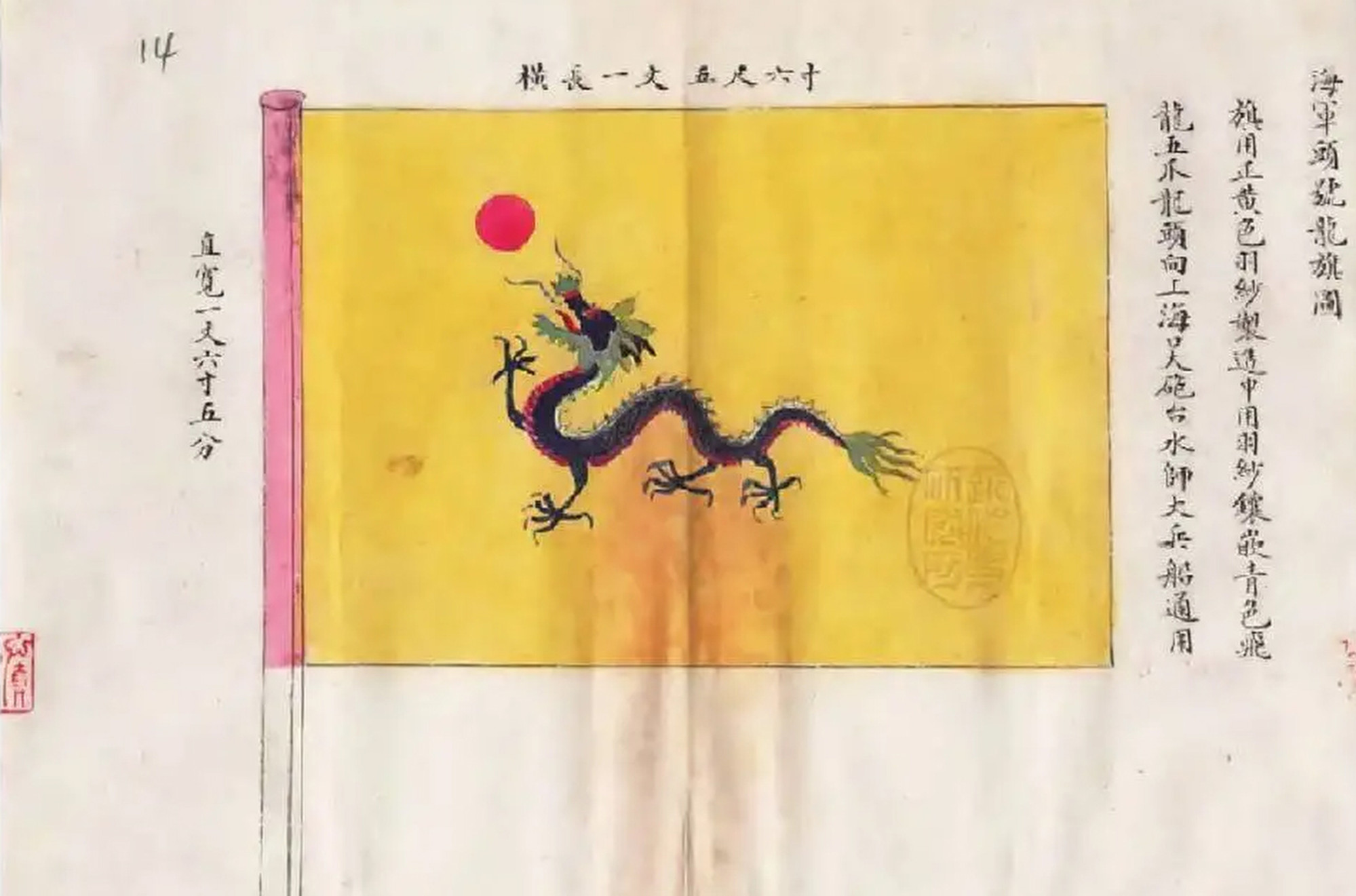
The history of the Chinese national flag, from the 19th century Yellow Dragon to 1949’s red design with its 5 stars, and what these symbolise
- Chinese emperors flew banners, but there was no national flag until 1862. It featured a blue Chinese dragon chasing a fiery red disc on a yellow background
- The Chinese republic first had a flag of 5 horizontal stripes, then in 1928 the ‘Blue Sky, White Sun, and the Vast Red Earth’. In 1949 came the 5-star Red Flag
You see it in films and television, and I’ve seen it for myself in my recent trip to the United States – the American zeal for flying the national flag.
Besides its expected appearance at public buildings, the Stars and Stripes also adorns private homes, places of worship, businesses and shops, even homeless tent encampments.
In the 19th century, the Chinese called the US flag huaqi, “the fancy flag”, in reference to its star-spangled exuberance. This obsolete, early nickname lives on in the Chinese word for American ginseng (huaqi shen), and the Chinese name for Citibank (Huaqi Yinhang). The Vietnamese still refer to America, the country, as Hoa Kỳ, the Vietnamese pronunciation of huaqi.
While Chinese emperors used banners and other ritual objects to draw attention to their status, imperial China never had an official state flag until the 19th century.
Sun Yat-sen, Yuan Shikai and China’s change to a republic
Naval skirmishes with Western ships, purportedly due to Chinese vessels not displaying any flags, and the conspicuous absence of a Chinese flag at international diplomatic events prompted the government of the Qing dynasty (1644–1912) to create China’s first modern state flag in 1862.
The Yellow Dragon Flag, as it was known, features a blue Chinese dragon against a yellow background, chasing a fiery, red disc on the top left corner.

When the last Qing emperor was overthrown in 1912, the new flag that was chosen by the government of the Republic of China was the Five-Coloured Flag, which consists of five horizontal bands of – from top to bottom – red, yellow, blue, white and black.
Traditionally, the colours represented the five cardinal points: east (represented by blue), south (red), west (white), north (black) and the centre (yellow). On the Five-Coloured Flag, the colours were appropriated to represent the five major ethnic groups in China: the Han (red), Manchu (yellow), Mongol (blue), Hui (white) and Tibetan (black).
The aggregation of the five peoples on the national flag reflected the new regime’s desire for national unity following a revolution that was at times racially divisive. National disunity soon followed, alas, with powerful warlords carving out entire regions of the country as their private domains.

After the Northern Expedition, with most of the warlords defeated and the country unified once again, the government of the Republic of China formally announced a new national flag in 1928 – the “Blue Sky, White Sun, and the Vast Red Earth”.
The flag consists of a red field with a blue canton and white sun on the top left corner. The blue, white and red colours correspond to the French ideal of liberty, equality and fraternity. They also represent Dr Sun Yat-sen’s Three People’s Principle, commonly expressed as the triad of democracy, national pride and people’s livelihood.
This flag is still flown in Taiwan, the self-governing territory whose official name is the Republic of China.
The current national flag of China, the “Five Star Red Flag”, has been officially in use since 1949, the year that the People’s Republic of China was founded.
On a field of red, a large five-pointed star at the top left corner is cradled by four smaller stars arranged in an arc to its right. All five stars are yellow.
According to the official explanation of the flag’s symbolism, the colour red stands for the Chinese Communist revolution, and the five stars represent the unity of the four social classes – workers, farmers, petite bourgeoisie and national bourgeoisie – under the leadership of the Communist Party of China, the big star.

The regional flags of Hong Kong and Macau also feature the five stars, but the way in which they are arranged differs from the national flag and from each other.
The quintuple stellar motif signals China’s ultimate sovereignty over the two special administrative regions, regardless of the high degree of autonomy they enjoy.

